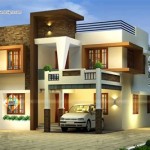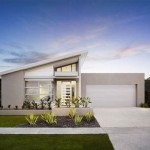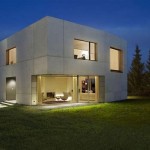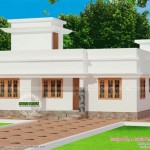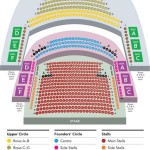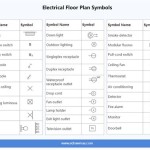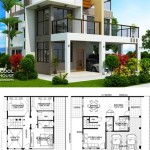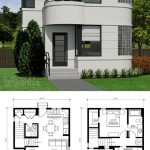Tranquility House Plan
The concept of a "Tranquility House Plan" encompasses a range of design and lifestyle choices aimed at creating a peaceful and serene living environment. It's more than just a floor plan; it's a holistic approach to home design that considers factors contributing to mental and emotional wellbeing. This approach resonates with the increasing awareness of the impact of the built environment on mental health.
Key Elements of a Tranquility House Plan
Several core principles guide the creation of a Tranquility House Plan, influencing everything from architectural choices to interior design and landscaping. Understanding these principles provides a foundation for implementing them effectively.
Natural Light Optimization
Maximizing natural light is a cornerstone of tranquility. Large windows, skylights, and open floor plans allow sunlight to permeate the home, creating a bright and airy atmosphere. Natural light has been linked to improved mood, increased productivity, and better sleep quality. Consider south-facing windows for optimal sun exposure throughout the day.
Connection with Nature
Blurring the lines between indoors and outdoors fosters a sense of peace and connection with the natural world. Large windows offering scenic views, patios, balconies, and strategically placed indoor plants contribute to this connection. Incorporating natural materials like wood and stone further enhances the feeling of being close to nature.
Minimalist Design Principles
Clutter and excessive ornamentation can be visually distracting and contribute to feelings of stress. A minimalist design approach emphasizes clean lines, simple forms, and a muted color palette. This creates a calming visual environment that promotes relaxation and reduces mental clutter.
Designated Quiet Zones
Creating dedicated spaces for relaxation and introspection is essential. These could be reading nooks, meditation rooms, or simply quiet corners within larger rooms. These spaces offer a sanctuary from the hustle and bustle of daily life and promote a sense of calm.
Sound Management
Minimizing noise pollution from both external and internal sources is critical for a tranquil home. This can be achieved through soundproofing materials in walls and floors, double-paned windows, and strategic placement of rooms away from noisy areas. Consider incorporating water features or white noise machines to mask unwanted sounds.
Mindful Material Selection
The materials used in the construction and furnishing of a tranquil home should be chosen carefully. Natural materials like wood, stone, and bamboo create a warm and inviting atmosphere. Avoid synthetic materials that may release volatile organic compounds (VOCs), which can negatively impact indoor air quality.
Personalized Comfort and Functionality
A truly tranquil home is one that caters to the specific needs and preferences of its occupants. This involves carefully considering the layout, furniture placement, and overall design to create a space that feels comfortable, functional, and supportive of individual lifestyles. Think about incorporating features that promote hobbies and activities that bring joy and relaxation.
Landscaping for Tranquility
The outdoor space surrounding the home plays a vital role in creating a tranquil environment. Incorporating elements like a calming water feature, fragrant flowers, and lush greenery can create a peaceful oasis just outside the doorstep. Consider creating designated outdoor areas for relaxation, meditation, or dining.
Smart Home Technology for Tranquility
Integrating smart home technology can enhance the tranquility of a home by automating tasks and creating a more comfortable environment. Smart lighting systems can adjust brightness and color temperature throughout the day to mimic natural light patterns, promoting better sleep. Automated temperature control and sound systems can also contribute to a more relaxing atmosphere.
Color Psychology
The colors used in a tranquil home should be chosen thoughtfully. Cool, muted colors like blues, greens, and lavenders are known for their calming effects. Warm neutrals like beige and gray can create a sense of grounding and stability. Avoid bright, stimulating colors in areas designated for relaxation. Consider the psychological impact of different colors when choosing paint colors, furniture, and decor.
Air Quality and Ventilation
Fresh, clean air is essential for a healthy and tranquil environment. Proper ventilation systems can help remove pollutants and maintain optimal humidity levels. Incorporating air-purifying plants can further enhance indoor air quality and contribute to a sense of wellbeing.
Organization and Storage Solutions
Maintaining a clutter-free environment is key to creating a sense of peace and order. Incorporating ample storage solutions throughout the home can help keep belongings organized and out of sight. This not only enhances the visual appeal of the space but also reduces mental clutter and promotes a sense of calm.

The Tranquility House Plan 04159 Front Porch Craftsman Exterior Atlanta By Garrell Associates Incorporated Houzz

Tranquility Craftsman House Plan

Tranquility 3999 Craftsman Style House Plan

Tranquility Bay Floor Plans Fl Keys Real Estate Orada Marathon

The Tranquility House Plan 04159 Lodge Room Arts Crafts Living Atlanta By Garrell Associates Incorporated Houzz Ie

Tranquility Dan Dejiacomo Custom Homes At Danbuilds4u Com

Craftsman Lodge House Plan Dream Plans Bungalow Layout

Small Barndominium House Plans The Affordable Solution For Your Dream Home Craft Mart

The Tranquility House Plan 04159 Front Porch Arts Crafts Exterior Atlanta By Garrell Associates Incorporated Houzz Ie

712 Sq Ft Tiny Barndominium 2 Bedroom Bathrooms Kits Available

